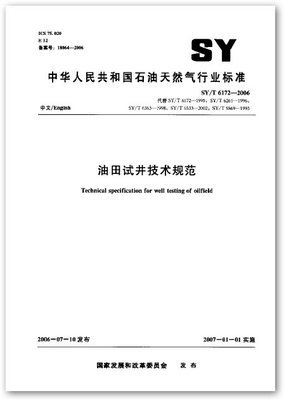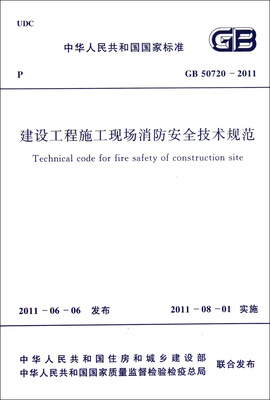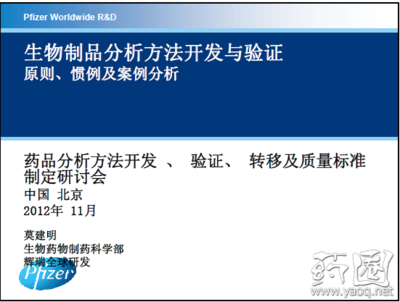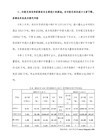| ICS 75.020 E 12 | ICS 75. 020 E 12 |
| 备案号:18064—2006 | Ref. No. : 18064—2006 |
| 中华人民共和国 | The Peopled Republic ofChina |
| 石油天然气行业标准 | Standard of Petroleum and Natural GasIndustry |
| SY/T 6172—2006 | SY/T 6172—2006 |
| 代替 SY/T 6172—1995, SY/T 6261—1996,SY/T 6363—1998, SY/T 6533—2002, SY/T 5869—1993 | ReplacingSY/T 6172—1995, SY/T 6261 — 1996, SY/T 6363—1998, SY/T 6533—2002,SY/T 586(> 1993 |
| 油田试井技术规范 | Technical specification for well Testing ofoilfield |
| 2006—07 —10发布 | Issued Date; 07—10—2006 |
| 2007-01-01实施 | Implementation Date: 01—01—2007 |
| 国家发展和改革委员会发布 | Issued by National Development and ReformCommission, P. R. C |
| 目 次 | Contents |
| 附录A (规范性附录)符号注释 | Annex A(Normative) Symbolsannotation |
| 前 言 | Foreword |
| 本标准由SY/T 6172--1995《油井试井技术要求》、SY/T6261-1996《注水井压力降落资料解释分析方法h SY/T 6363—1998《不稳定试井技术要求》、SY/T6533-2002《稳定试井测试及解释方法》和SY/T5869—1993《自喷井井下压力常规测试》五个标准整合修订而成。此次整合修订的主要内容包括: | This standard is revised on the basis of thefol?lowing five standards: SY/T 6172—1995 Technical requirementsfor oil well testing, SY/T 6261 1996 Interpretation method for thepressure falloff test in "water injection wells. SY/T 6363―1998Technical requirements of transient -well test , SY/T 6533—2002Steady well testing and its data interpretation methods, SY/T5869—1993 Downhole pressure conventional test of flowing well. Themain items of revising are as follows; |
| ——将SY/T 6172-1995和SY/T6363-1998中内容重复部分进行了整合、精简; | 一The same articles or similar ones of SY/T6172—1995 and SY/T 6363—1998 are incorporated andsimplified; |
| ——将上述五个标准附表中的常用公式进行了省略; | 一The common used equations in the attached listare canceled; |
| ——将上述五个标准的符号注释部分进行了合并、重写; | —The symbol annotations of the above mentionedfive standards are incorporated and rewritten; |
| ——对有关条款的内容进行了精简, | 一Some other articles are simplified; |
| ——增加了电缆作业电子压力温度测试和毛细钢管井下压力测试方面的内容。 | 一The downhole pressure and lemperaturemeassurement with electronic pressure gauge by wireline operationand the downhole pressure measurement with steel capillary pipe aresuperinduced to this standard |
| 本标准由油气田开发专业标准化委员会提出并归口。 | Thp standard was proposed hy The Technicalcommittee of Standardization for Oil and Gas Field Development, itis under the jurisdiction of The Technical Committee ofStandardization for Oil and Gas FieldDevelopment. |
| 本标准起草单位:中国石油天然气股份有限公司华北油田分公司勘探开发研究院。 | The standard is drafted by the Exploration andDevelopment Research Institute of Huabei Oil?field Company,PetroChina. |
| 本标准起草人:盂庆春、张宗达、朱业东、张辉。 | The main drafters of this standard are MengQingchun- Zhang Zongda, Zhu Yadong and Zhang Hui, |
| 英文翻译主要单位:中油测井技术服务有限责任公司、大庆石油学院。本标准主要翻译人:刘能强、宋考平、张建国。 | This standard is translated primarily by LiuNengqiang from China National Logging Corp., Song Kaoping and ZhangJianguo from Daqing Petroleum Institute. |
| 本标准所代替标准的历次版本发布情况为: | The former standards replaced by this standardare; |
| 本标准以中文和英文两种文字出版。当英文和中文两种版本有歧义时,以中文版本为准。 | This standard is published in both Chinese andEnglish. In the event of any discrepancy between the texts, theChinese version shall prevail |
| 油田试井技术规范 | Technical specification for well testing ofoilfield |
| 1. 范围 | 1 Scope |
| 本标准规定了油田试井测试方法、资料录取和解释的技术要求。 | This standard specifies the technicalrequirements of test method, data acquisition and interpretation ofwell test. |
| 本标准适用于采油井和注水井的试井设计、录取资料要求和解释成果的应用等。 | This standard is applicable to well test design,data acquisition and interpretation of oil wells and waterinjection wells, and the application of the interpretationresults. |
| 2. 规范性引用文件 | 2 Nonnativereference |
| 下列文件中的条款通过本标准的引用而成为本标准的条款。凡是注日期的引用文件,其随后所有的修改单(不包括勘误的内容)或修订版均不适用于本标准,然而,鼓励根据本标准达成协议的各方研究是否可使用这些文件的最新版本。凡是不注日期的引用文件,其最新版本适用于本标准。 | The following normative documents containprovisions which, through reference in this standard, constituteprovisions of this standard. For dated references, subsequentamendments to, or revisions of, any of these publications (excludeerrata) do not apply. However, parties to agreements based on thisstandard are encouraged to investigate the possibility of applyingthe most recent editions of the normative documents indicatedbelow. For undated references, the latest e-dition of the normativedocument referred to ap?plies, |
| SY/T5098石油下井仪表用计时器技术条件 | SY/T 5098Technical conditions for the calculagraph used in donmholeinstruments |
| SY/T5099石油下井仪器温度、压力分级及其匹配 | SY/T5099 Gradingand matching of downhole imtruments according to measuredtemperature and pressure |
| SY/T5387常规原油油藏试采地质技术要求 | SY/T 5387Geologic technical requirements of production test in conventionaloil reservoir |
| SY/T5483常规地层测试技术规程 | SY/T 5483Technical specification of conventional formationtesting |
| SY/T5968探井试油试采资料质量评定方法 | SY/T 5968 Assessment methods of the data qualityof well testing and production test in explorationwells |
| SY/T6013常规试油资料录取规范 | SY/T 6013 Specification of data acquisition ofconventional well test |
| SY/T6102油田开发监测及取资料要求 | SY/T 6102Oil field development monitoring and data requirement |
| 3. 试井设计 | 3 Well testdesign |
| 3.1 试井目的 | 3. 1Purposes of welt test |
| 3.1.1确定油藏的地层压力、地层温度、流动压力及流动压力梯度。 | 3.1.1 To determine theformation pressure, formation temperature, flowing pressure andflowing pressure gradient. |
| 3.1.2求取油井的产能方程和注水井吸水指数,了解油井的生产能力和注水井的吸水能力。 | 3.1.2 To derive thedeliverEbility equation of the tested oil well, to determine thewater injec-tivity index of the tested water injection well- so asto realize the productivity of the tested oil well or theinjectivity of the tested water injec?tion well. |
| 3.1.3了解油藏的边界类型和距离,求取地层渗流特征参数,计箅动态储量。 | 3.1.3 To detect the type of the boundaries ofthe reservoir and the distances from the tested well to theboundaries;to calculate the physical characteristic parameters andthe dynamic reserves of the reservoir. |
| 3.1.4了解地层的完善程度,为制定增产措施、评价措施效果提供依据。 | 3.1.4 To determine thecompletion factor of the tested well and to provide information forstimulation treatment and evaluation of the treatmenteffect, |
| 3.1.5分析采油井、注水井的生产状况,确定其最佳工作制度。 | 3.1.5 To analyze theproduction of the tested oil well or the injection of the testedwater injec?tion well, so as to determine the optimal flowrate. |
| 3.2 测试井、层的基础数据 | 3.2 Basic information of the tested well and thetested formation |
| 3.2.1并的基础数据。井的基础数据包括: 地理位置; 构造位置; 井别; 油层中深; 最大井斜深度; 总方位, 倾角; 完钻日期; 完钻井深;完井日期; 完井方式; 人工井底。 | 3.2.1 Basic information of the tested welh Itincludes: geographic location of the well; structural location ofthe well; the type of the well; mid-depth of the formation; thedepth of the borehole where the maximum deviation appears; theazimuth of the well;dip angle of the well; finishing driiling dace;total depth of the well; completion date; completionmode; depth of arlificial wellbottom. |
| 3.2.2 目前井身结构及生产管柱结构示意图。 | 3. 2.2 Theschemaiic drawings of the existing casing program and the flowstring structure. |
| 3.2.3测试层数据。測试层数据包括: | 3.2.3 Basic information of thetested formation. It concludes- |
| 测试层的层位、层号; 解释井段; | horizon and its number; interpretationinterval(s); |
| 射孔井段: 射开厚度; 储层岩性; 有效厚度; 孔隙度; 渗透率;试油成果; | perforated interval(s);thickness of theperforated interval(s); lithology of the formation; effectivethickness;porosity; permeability; well test results; |
| 试油结论及作业措施情况。 | conclusion of well test and information aboutthe operation and measures for the tested formation. |
| 3.2.4 油水井生产情况。 | 3.2.4 Production informationabout tested oil or water-injection wells. |
| 油井生产情况包括:生产日期;工作制度;日产量(油、气、水);含水率; | Production information about tested oil wellsinclude: production duration; working system (choke size orswabbing frequency and depth);(oil, gas, water) flow rate; watercut; |
| 累积产量(油、气、水); | (oil, gas, water) accumulativeproduction; |
| 压力(油压、套压、流压、静压)及上次压力测试时间。 | pressure (tubing pressure, casing pressure,flowing pressure, static pressure) and the time when the pressurewas measured recently. |
| 注水井半产情况包括: | Injection information of the water injectionwell include; |
| 生产曰期;注人方式;泵压;油压;套压;日注水量;累积注水量。 | injection duration; injection mode; pumppressure; tubing pressure; casing pressure; water- injection rate;accumulative injected water volume. |
| 3.2.5油井产液剖面和注水井吸水剖面。 | ― 3. 2.5Production profile of the oil wells or In?jection profile of thewater Injection wells, |
| 3.2.6 流体物性参数。 | 3.2.6 Physical properties of the producedfluid. |
| 地面流体性质包括- | Surface fluid properties include: |
| 取样井号; | the sampled wellname; |
| 取样日期; | sampling date; |
| 原油密度; | density of theoil; |
| 粘度; | viscosity; |
| 凝固点; | freezing point; |
| 初馏点; | initial boilingpoint; |
| 含蜡量; | wax content; |
| 含硫量;. | sulfer content; |
| 胶质含量; | colloid content of thefluid; |
| 地层水总矿化度。 | total salinity of the formationwater. |
| 地层流体性质包括:取样井号; | Formation fluid properties include: the sampledwell name; |
| 取样日期; 分析日期; 地层压力; 地层温度; | sampling date; analyzing date; formationpressure; formation temperature; |
| 地层原油密度;地层原油粘度;原油体积系数; | reservoir oil density; reservoir oil viscosity;formation volume factor of oil; |
| 原油压缩系数;原始饱和压力;溶解气油比;天然气相对密度; | compressibility of oil; original bubble-pointpressure; solution gas-oil ratio of the reservoir oil; relativedensity of natural gas; |
| 天然气偏差因子; 地层水粘度; 地层水体积系数;地层水压缩系数。 | deviation factor of natural gas; formation waterviscosity; formation volume factor of water; compressibility offormation water. |
| 3.3测试时间的估算 | 3.3 Estimation of test duration |
| 3.3.1稳定试井每个测点流动达到稳定的时间,计算公式为: | 3.3.1 For steady well test, the formula forestimating the flow time when the steady-state flow beginsis: |
| 稳定试井的最小测试时间应大于ts。 | The shortest duiation of each flow period insteady well testing should be longer thants. |
| 式(1)中以及本标准其他公式和文字涉及的物理量符号,其名称、单位等均列于附录A中。 | The name, dimension of a11 the nomenclatures inequation (1), other form a be or text in this standand are listedin Annex A. |
| 3.3.2压力恢复(压降)测试时间估算,计算公式为- | 3.3.2 The formulae for estimating the durationof pressure buildup, drawdown or falloff test are |
| a)压力恢复(注水井压降)测试径向流开始的时间: | a) For build-up or falloff test, the time wheninfinite acting radial flow begins is: |
| 最少测试时间应大于10A/b, | The shortest testing duration should be longerthan 10A/b |
| b)压降测试径向流开始的时间: | b) For drawdown test, the time when infiniteacting radial flow begins is: |
| 最少测试时间应大于-10"。 | The shortest testing time should be longer than10". |
| c)探边测试拟稳态开始时间: | c) For reservoir limit test (RLT),the time whenpseudo- steady flow begins is: |
| 最少测试时间应大于(3?4) 6?。 | The shortest testing duration should be longerthan 3?4 times of tpss. |
| 3.3.3干扰试井测试时间估算方法是确定测试流量q、激动生产时间t和压力计分辨率SP之间的关系。当g为选定流量时,&与t的关系为: | 3-3.3 For interference test, the estimation ofthe testing duration is based on determining the relation of flowrate q,production time t of the active well during the test, andthe resolution of the pressure gauges. When q is fixed, therelation between & and t is |
| 8P选定0.00lMPa时,最少测试时间应大于10t。 | When ^p is seWtfti as 0. 001 MPa, the shortesttesting time should be longer than 10t. |
| 3.3.4 根据巳知的或计算的地层参数(K, p, h, 〃,ψ)进行试井模拟,模拟出压力曲线及边界特征和边界反映时间,并作预分析,再根据模拟结果确定测铽时间。 | 3.3.4 Perform well test simulation based onknown or calculated formation parameter(k, p,h、 and ψ)to obtain thepressure history, the character of the boundaries and the time whenthe boundaries effect- Perform pre-analysis and determine thetesting duration with the result of the simulation. |
| 3.4试井方法的选择 | 3.4 Selection of well test method |
| 3.4.1稳定试井方法选择。 | 3.4.1 Selectionof steady well test method. |
| 根据流动达到稳定的时间选择分析方法: | Selecting the test method based on the time whensteady state flow (ts) begins: |
| a)当t≤10h时,采用系统试井法。 | a) perform systemic well testif t≤10h; |
| b)当≥10h时,采用等时试井或修正等时试井法。 | b) perform isochronal welltest or modified isochronal well test if t>10h. |
| 3.4.2 不稳定试井方法选择。 | 3.4.2Selection of transient well test method. |
| 3.4.2.1单井试井方法选择:单井试井包括压力恢复、压力降落和变流量测试,可根据测试目的和生产条件选择。 | 3.4.2.1 Selection of single well test method ;Single well test includes pressure build-up, pressure drawdown andmulti-rate test. The test method can be selected according to thepurpose of the test and the productionconditions. |
| 应优先选择关井测压力恢复(注水井压力回落〉,关停并优先选择压力降落。在某些特殊条件下可考虑选择变流量的方法取得不稳定压力数据。 | Preferentially select shut-in well to performpressure build-up test (or pressure falloff test for waterinjection well). For the well which has been shut-in or stoppedproducing, preferentially select pressure drawdown test. Under somespecial conditions, multi-rate test method could be selected toacquire transient pressure data |
| 3.4.2.2多井试井方法选择:多井试井包括干扰试井和脉冲试井,主要是为了确定井间的连通情况,可根据实际条件来选择。 | 3.4.2.2 Selection of multi-well test method:Multi-well test includes interference test and pulse test; it isgenerally used to determine connectivity between wells. Test methodshould be chosen by actual conditions, |
| 4. 试井操作规范 | 4 Operationspecificaticm for well test |
| 4.1钢丝作业机械压力计压力、温度测试 | 4.1 Pressure and temperaturemeasurement with mechanical pressure gauge run bywireline |
| 4.1.1适用范围: | 4.1.1 Range of application |
| 钢丝起下作业的机械压力计,适用于油水井流压静压及其梯度、流温静温、压力恢复或压力降落等常规测试。 | Mechanical pressure gauge run by wirelineapplies to measuring flowing pressure, static pressure and theirgradient, flowing temperature, static temperature; pressurebuilding-up, pressure drawdown and other conventional tests in oilwells or water wells. |
| 4.1.2 测试仪器。 | 4,1.2 Testinstruments |
| 4.1.2.1压力计技术指标应符合SY/T 5098, SY/T 5099的有关规定。 | 4.1, 2.1 The technical specification of thepres?sure gauge must accord with the regulations in the standardsSY/T 5098 and SY/T 5099 . |
| 4.1.2.2仪器应按规定及时校准,以保证測试的成功和所取资料的准确。 | 4.1, 2, 2 The instruments must be calibratedperiodically according to correlative regulations in order toensure the test being successful and the acquired data beingaccurate |
| 4.1.3 测试井。 | 4.1.3 Wellto be tested |
| 4.1.3.1测压井的生产情况稳定,测前三天内日产量或日注量波动不超过平均量的±5%。 | 4.1.3.1 The production must be stable, thefluctuation of the flow rate or the water injection rate in theduration of 3 days just before the test should be within ± 5 % ofthe average. |
| 4.1.3.2井口设备无渗漏,阀门安装齐全,启闭灵活. | 4.1.3.2 There is no leakage on wellheadassembly, and the valves on which are all installed and functionproperly. |
| 4.1.3.3井下管柱结构淸楚,并具备獮压仪器顺利起下的条件。 | 4.1.3.3 The structure of thedownhole string should be clearly known and available for run?ningthe measurement instruments in and pull them out of the holesuccessfully. |
| 4.1.3.4井口扒杆安装应垂直、稳固,滑轮应转动灵活,并保证录井钢丝对准井口。 | 4.1.3.4 The gin pole on thewellhead must be installed vertically and firmly, the pulleys mustbe able to run smoothly and ensure the logging wireline centeringin the well bore |
| 4.1.4 测试技术要求。 | 4.1.4 Requirement of testingtechnique |
| 4.1. 4.1压力计最大压力量程Pm按式(6)选取 | 4. 1. 4.1The maximum range of measurement of pressure gauge, Pm, isdetermined by following equation |
| 4.1.4.2压力计精确度不低于0.5%。 | 4. 1. 4. 2 The accuracy of the pressure gaugemust be higher than 0.5%, |
| 4.1.4.3 根据试井设计及待测井起下速度选择好压力计所用时钟。 | 4.1.4.3 Select proper clocks used in pressuregauges according to the well test design and the velocity ofrunning in and pulling out the gauges in the well to betested. |
| 4.1.4.4根据井下管柱结构状况,压力计下到油层中部或接近油层中部的位置。 | 4.1. 4.4 Run the pressure gauges into the holeat the mid-depth of the tested zone(s) or as closer to it aspossible according to the structure of downholestring. |
| 测井筒压力或温度梯度间隔规定为100m,要求停梯度点时间不小于10min,梯度测点不少于3个。 | The pressure gradient (or temperature gradient)measurement must be done by measuring one pressure (or temperature)point per hundred meters, measuring duration at each point must notbe less than 10 min, and measuring points must be 3 ormore. |
| 4.1.4.5长期停产井测压时,应短时间放喷后再关井.关井时间应大于放喷时间4倍。 | 4.1.4.5 For the well which has been stoppedproducing for a long time, it is necessary to flow the well for ashort time before shutting in to measure its pressure, and theshut-in duration should be longer than 4 times of the flowingtime. |
| 4.1.4.6 关井测压过程中应严格检查井口是否存在渗漏现象。井口应安装油压表。 | 4.1.4.6 In the period of shutting-in forpressure measuring, wellhead must be checked-up strictly to ensurethat there is no leakage. Tubing pressure gauge should be installedon wellhead. |
| 4.1.5 测压原始资料质量要求。 | 4.1.5 Quality requirement ofthe raw data of pressure measurement |
| 4.1.5.1原始报表及现场施工记录填写要求齐全准确。 | 4.1. 5.1 The raw data reports and the wellsiteoperation records must be filled in completely andaccurately. |
| 4.1.5.2测试卡片基线平直(偏差小于0.2mm),不双不弯;曲线清晰,无明显台阶,时钟走时正常,量程适当;梯度停点平稳,台阶淸楚,台阶宽度不小于2.0mm;两张卡片曲线形态相同,读出相同点压力差值应符合压力计精度要求, | 4. 1. 5. 2 The baseline of the pressurerecording chart must be flat and straight (its warp must be lessthan 0. 2 mm),and must not be bended or become a dual-line; therecorded pressure curve must be clear without any obvious steps.The clock must run normally and the range of it must be adequate.The calibrated gradient points must be stable and the calibratedgradient steps clear. The calibrated gradient steps must be widerthan 2.0 mm. The shapes of two recording charts from differentgauges must be consistent; and their readings for the same pressurepoint must meet the accuracy requirement of the gauges. |
| 4.1.5.3测试卡片应无污损、破裂、褶皱及划破等现象,线条宽度不大于0.2mm,图形位置居中。 | 4.1.5.3 Thetest recording chart must not be defiled or cracked or rugate orlacerate. The width of the recording line must be less than 0.2 mmand the figure centered on the chart. |
| 4.1.5.4测试卡片记录时间应与报表时间相符,10h时钟误差小于10min; 30h时钟误差小于20min,50h时钟误差小于30min。 | 4.1.5.4 The time recorded on the recording chartand that recorded in the report must be consistent; the time errorbetween them must be less than 10 min for 10hr clock; less than 20min for 30hr clock; and less than 30 min for 50hrclock. |
| 卡片上方空白处标明井号、测试日期、压力计编号及下入深度。 | The well name, test date* serial number and thesetting depth of the pressure gauges must be labeled on the blankpart of the chart. |
| 4.1.6 测试资料整理、计算及初步解释。 | 4.1.6 Process, calculation andprimary interpretation of the test data |
| 4.1.6.1对合格的测试成果,按卡片测量、应变一压力换算、成果报表填写的流程对测试资料进行整理及计算。 | 4.1.6.1 For qualified test results, process andcalculation must be conducted in the following sequence: scanningthe recording chart, calculating the pressure from the strain andfilling-in the test report. |
| 4.1.6.2在应变一压力换算中,压力校验曲线上,校验应变与温度的关系曲线不得少于三条,且要求最高温度线应适合使用地区的油层最髙温度。 | 4.1.6.2 On the pressure calibration curves forcalculating the pressure from the strain, there must be at least 3relation curves of strain vs. temperature; and the maximumtemperature of them must fit the maximum temperature of thereservoir in the area where testing is conducted. |
| 4.1.6.3在采油井关井测压力恢复或注水井关井测压力回落的应变一压力换算中,使用l0h时钟的读点可按0.5min,lmin,2min,5min,l0min,20min选点,30min以后可每隔20min?50min读一个点,曲线的最后一个点一定要读。 | 4.1.6.3 When calculating the pressure from thestrain for build-up test in production wells or fall-off test inwater injection wells, if 10 hr clock was used, reading points onthe recording chart should be selected as: 0.5 min, 1 min, 2 min, 5min, 10 min, 20 min; from then on read one datum every20min?50min,and the last point of the recorded pressure curve mustbe read. |
| 特殊井曲线读点要适当加密,曲线异常部分也要加密。 | The intervals between reading points should besmaller for the abnormal part (s) or the specialwells. |
| 使用100h时钟的,在16mm应变以前毎0.1mm读一个点,16mm以后每0.5mm或1mm读一个点。 | If 100 hr clock is used, reading points must beas dense as one reading per 0.1 mm before 16 mm of the strain, andone reading per 0.5 mm or 1 mmafterward. |
| 4.1.6.4输人实测压力一时间关系数据,运用试井解释软件作常规或现代试井的初步分析解释。 | 4.1.6.4 Input measured data of pressure vs.time, then perform primary interpretation with conventional ormodern well test interpretaticm methods with well testinterpretation software. |
| 4.2电缆作业电子压力计压力、温度测试 | 4.2 Pressure and temperature measurement withelectronic pressure gauge run bywireline |
| 4.2.1适用范围。 | 4.2.1 Range of application |
| 4.2.1.1有条件的情况下要选择电子压力计测试。对于髙产、高压、高温等复杂或重点井应采用地面直读式电子压力计测试,以确保资料的精度和测试的成功。 | 4.2.1.1 Electronic pressuregauges should be chosen to test the well if it is possible. Inorder to ensure accurate data acquisition and success of the test,surface read out electronic pressure gauge must be chosen to testthe high-productivity wells, high pressure or/and high temperaturewells or other complicated or important wells. |
| 4.2.1.2 钢丝作业的井下存储式电子压力计的测试可参照4.1的内容及有关规定。 | 4.2.1.2 The pressuremeasurement with downhole memory electronic gauges run by wirelinerefers to Article 4.1 in this chapter and concernedspecifications. |
| 4.2.1.3 电子压力计的精度等级目前分为三类: | 4. 2. 1. 3At present, according to their accuracy, electronic pressure gaugesare graded into 3 levels: |
| 第一类:全量程的0.01%~0.025%; | The first grade: the accuracy is within 0.01% -0.025% of the full stair; |
| 第二类:全量程的0.04%?0.07%, | The secondgrade:the accuracy is within0.04% - 0.07% of the full scale; |
| 第三类:全量程的0.1%?0.3%。 | The third grade:the accuracy is within 0.1% -0.3% of the full scale. |
| 其分辨率、稳定度以及量程等有各自相应的指标,在选择时应考虑以下原则- | There are corresponding specifications aboutresolution, stability and range of electronic pressure gauges.Following principles must be considered when choosing thegauges: |
| a)对于一般油水井流压流温及其梯度、静压静温及其梯度,压力恢复或压力降落等常规测试,如需降低成本,选用第三类精度等级的电子压力计。 | a) For conventional tests suchas measurement of flowing pressure, flowing temperature and theirgradients, static pressure, static temperature and their gradients,pressure build-up and drawdown of oil wells or water wells, and ifreducing the cost of the test must be considered, the third gradegauges can be chosen to perform the test; |
| b)对于探边测试以及干扰测试、脉冲测试,要求压力计在井下工作时间长、存储容量大、稳定性好,优先选择第一类精度等级的电子压力计,某些第二类精度等级的电子压力计也可达到这些要求。 | b) For the interference tests,pulse tests or reservoir limit test, it is required that thepressure gauges work downhole for a long time and possess a largememory and good stability, so the first grade gauges should beprimary chosen; some second grade gauges can also be chosen if theyare able to meet the above requirements; |
| c)对于压力梯度测试,要求压力计响应时间短、分辨率高,优先选择石英晶体或硅一蓝宝石为压力传感器的电子压力计(第二类)。 | c) For pressure gradient test,it is required that the gauges response the pressure change veryquickly and possess very high resolution, the second grade pressuregauges with quartz or silicon - sapphire sensor should be chosenprimary to meet the above requirements; |
| d)对于高温、高压井或超深井的测试,选择第一或第二类精度等级且量程高,能满足要求的电子压力计。 | d) For the test in highpressure or/and high temperature wells or in overdeep wells, thefirst or second grade electronic gauges possessing a wide range andbeing able to meet the requirements should be chosen. |
| 4.2.1.4对于待測压井的要求与机械压力计测试相类似.见SY/T5483的规定。 | 4.2.1. 4 Requirements of the tested wells aresimilar to those in the case of measuring with mechanical pressuregauges. Refer to the regula?tions in SY/T5483. |
| 4.2.2测试技术要求。 | 4.2.2 Requirements of testtechnique |
| 4. 2. 2.1所选井下仪器的额定工作压力应高于井下最高压力3.45MPa,仪器及电池额定工作温度应高于井下最高温度10C。或按被测井压力变化介于压力计全量程30%~80%的原则选用压力计。 | 4. 2. 2.1 The rated working pressure of thedownhole pressure gauges to be used must be 3.45MPa higher than themaximum downhole pressure of the tested well. The rated workingtemperature of the downhole gauges and the batteries to b? usedmust be 10C higher than the maximum downhole temperature. Thepressure gauges can also be chosen this way; the whole range of thedownhole prpssure of the tested well is between 30% and 80% of thefull scale of the gauges. |
| 4.2.2.2对选用的仪器应在有效的校准周期内,按规定进行使用前的保养,下井前应检验合格。 | 4.2.2.2 Pressure gauges can only be used in theperiod of validity of its last calibration, must be mainlainedbefoie being u&txl and pass strict check - upbefore being run inio the hole. |
| 4.2.2.3下人深度、起下过程中停台阶点的次数及时间以及开关井或改变工作制度等,按测试设计的规定进行,并根据现场实际测试情况进行调整。 | 4.2.2.3 The setting depths, steps and staydurations at each step in the hole during running-in andpalling-out, flow or shut-in the well or change the choke must beconducted according to the test design, and must be adjustedaccording to the actual circumstance during thetest. |
| 4.2.2.4根据资料解释的需要,凋整录取资料的速度、数量及范围。 | 4.2.2.4 The sampling rate, the amount and therange of the data acquisition must be adjusted according IO therequirement of data interpretation. |
| 4.2.2.5按SY/T 5483规定的直读测试作业程序和规则进行测试作业,确保现场测试的安全与成功。 | 4.2.2.5 In order to ensure the lest beingperformed safely and successfully, all test operations must beconducted according to the. procedure and regulation of well testwith surface read out system defined in the operation specificationSY/T 5483. |
| 4.2.3测试原始资料质量要求。 | 4.2.3Quality requirement of raw test data |
| 4.2.3.1 压力计精确度要求对流、静压测试要达到0.3%(FS),稳定试井、产能试井、压力恢复、压力降落试井要达到0.09% (FS),探边测试、干扰测试和脉冲测试要达到0.05%(FS)。 | 4, 2. 3, 1 丁he accuracy of the pressure gaugesmust be 0, 2 % of the full scale for measuring the flowing pressureor static pressure; 0. 09 % of the full scale for steady test,deliversbility test, pressure build- up test or drawdown test; 0.05 % of the full scale for interference test or pulsetest. |
| 4.2.3.2现场施工人员提供的数据磁盘要有效.解释人员能读出测试数据,数据内容依次为序号、测试日期、测试时间、相对时间、实測压力、实测温度。 | 4.2.3.2 The dala disk provided by well test teammuse be valid, and from which interpreter can read all the dataacquired during the test. The content of data must consist of andin order of sequence number, test date, test time, e lapsed timetmeasured pressure and measured 26 temperature. |

 爱华网
爱华网



